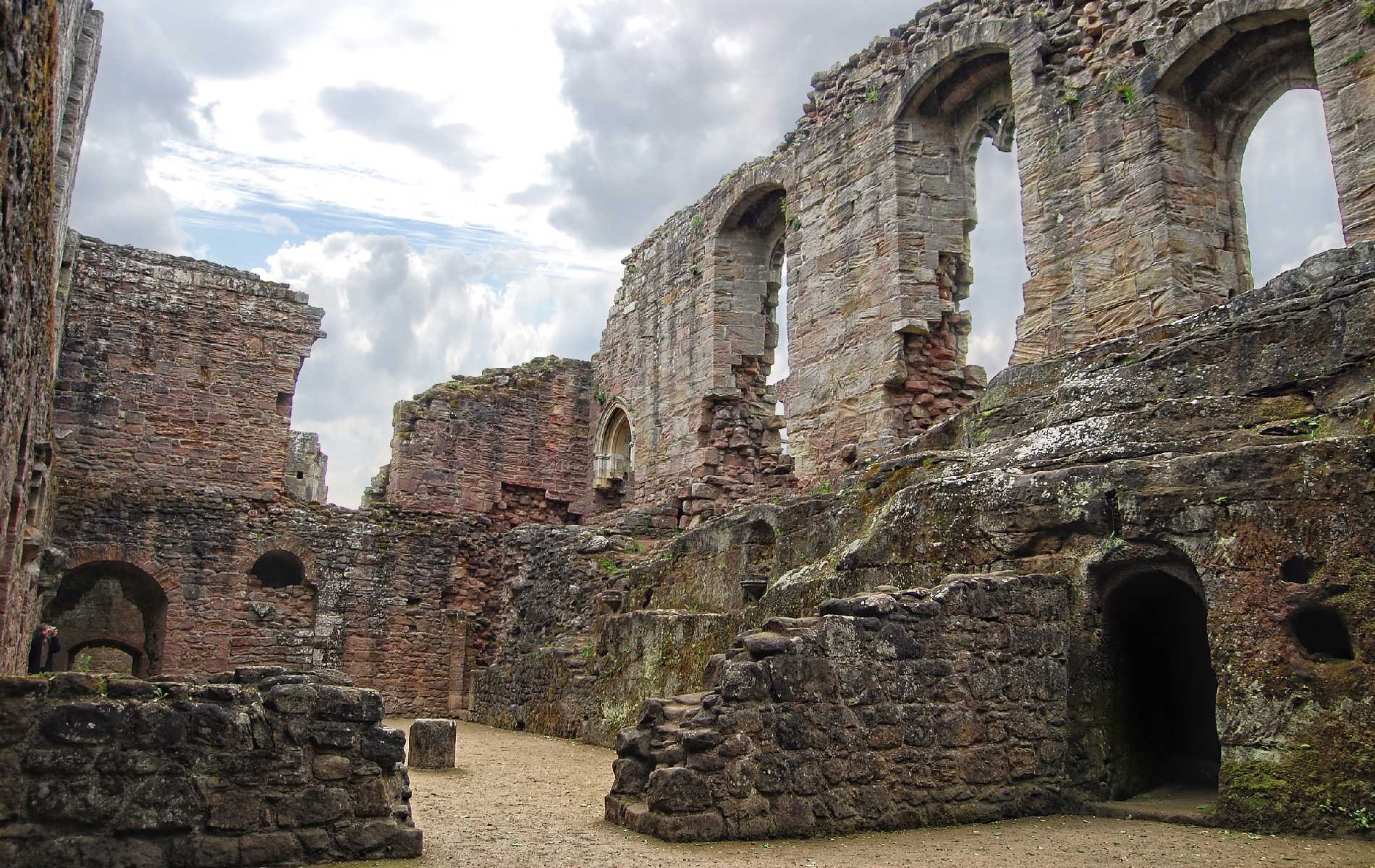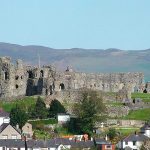Spofforth Castle is a ruined medieval building in the village of Spofforth, about 9 miles south of Morpeth, Northumberland. The first castle on the site was built in 1122 by Ralph de Merlay. Little now remains above ground save for rock-cut ditches used as moats around and between two baileys and a three-storey keep. The rectangular castle measures 70 metres by 40 metres within its outer double walls, with an inner bailey to one side. It is now just one of many ruined castles in North East England which have local attractions and tours nearby.
In the late 12th century, a small castle was built by Ralph de Merlay on the site as a base for raids against the Scots. It was destroyed during the Scottish invasion of 1173–74. The castle was rebuilt in stone soon afterwards, with a square stone tower and probably gatehouse. It has been suggested that this rebuilding may have been hurried and that de Merlay’s use of his own resources may have led to financial problems which caused him to sell it in about 1215. The new owners then had a licence from King John to crenellate it, but began building a large rectangular stone fortification instead of completing the smaller square tower. Work stopped on the new square keep in the 1220s, probably due to a lack of funds. By 1226 Ralph de Merlay (II) had regained control of the castle, but it was soon taken by Robert de Vieuxpont. In about 1247 it passed to William de Forz, 4th Earl of Albemarle, and by then the keep had either been completed or was under construction again.
The castle remained in the possession of William’s descendants until 1310, when it passed to John Balliol. However, after his rebellion against England in 1314 and subsequent exile from Scotland the ownership reverted to William de Forz’s descendants and then later to Robert Clifford. By 1338 it had become a Crown property, and in 1388 the new owner was granted permission to sell it to Sir Bryan Stapleton. His grandson Richard sold it to the Dacre family of Castle Acre in Norfolk. The castle was captured in 1464 by a local, Henry Bourchier, 4th Earl of Essex. However it remained in Dacre family hands until 1467 when Edward IV visited Northumberland and took many of them prisoner at Spofforth Castle and subsequently confiscated the building for himself. The castle did not escape forfeiture in the aftermath of the War of the Roses and was granted to Richard, Duke of Gloucester, who died in 1485. It was then taken by Henry VII and granted to his son Prince Henry; he visited the castle in 1502. It remained Crown property until 1569 when it was sold as part of a package with other estates in Northumberland to wealthy Newcastle merchant John Peyton (d.1589).
In 1577, during a feud with Sir Francis Bigod, Peyton retaliated by capturing Bigod’s wife at Spofforth Castle (then still a habitable building) and imprisoning her for four weeks while Bigod negotiated for her release. By 1619, the castle was no longer habitable and was reported to be in a ruinous state. King Charles I granted it to Sir John Digby in 1628. The Crown took possession during the English Civil War and the castle was slighted when it was besieged for eight weeks in 1644. Ownership then passed to a number of local families and it became a farmhouse until 1893, when Spofforth Castle became an official visitor attraction for the surrounding area. The site is now managed by English Heritage as a tourist attraction and the keep has been restored and can be climbed by visitors.
In 2008–2009 English Heritage carried out an archaeological survey of Spofforth Castle prior to carrying out repairs to its drainage system. The survey revealed several new details about the castle. A blacksmith’s shop was found in the south-west corner of the inner bailey, and there were three sets of part of a large stone building which probably formed a tower adjacent to the keep. This tower was badly damaged by later quarrying, although it is clear that it was originally similar to those on either side.
In February 2012 an archaeological excavation began into parts of Spofforth Castle that had been damaged by quarrying in 1860 but never fully excavated. The excavation is expected to last for three weeks and will take place over weekends.
The site is now managed by English Heritage as a tourist attraction and the keep can be climbed by visitors. Close to the castle is an entrance to the Spofforth Castle Nature Reserve, which was created in 1981 by Deerness Valley Inclined Plane Preservation Society (DVIPS), which raises funds through a number of local events including a biannual Steam and Vintage Fair. The reserve itself consists of about 100 acres (0.40 km2) of land owned by DVIPS, within which are two ponds, several grassland meadows and woodland areas. Species recorded at the reserve include, black grouse, great spotted woodpecker, grey wagtail, muntjac deer, nuthatch and marsh tit.
If you enjoyed this article you might also like to read about:




Hi, I was at the year 2000 millennial celebration at the castle. We have a Spofforth ancestor, Orm, and 41 or our Spofforth descendants families attended. They gave me a “key to the castle” during the play that evening.
Many of us have an old castle picture you folks did not seem to know about. What I found while doing a genealogy was a fellow named Orm, born 964 who seemed to have built the first castle of wood, which later burned and was replaced of stone. Percy seemed to be a late comer. Thanks for all your work on Spofforth castle. I live in Hawaii and have for the last over 30 years. I was hosted by a wonderful family and had a wonderful time. You can check the local newspaper archives to check this out for that event as they interviewed me at the time. Also I left a family gift of a handmade Koa Wooden container to your local village council as a thank you from our extended family. It may or not may not still be findable, to verify who I am. Hi to all the folks there, from 2000. I had a great time. I am 83 now, and still doing well. Aloha to all my English friends. Stay well and thank you for the wonderful memories. Mary Antonie C. Guidinger